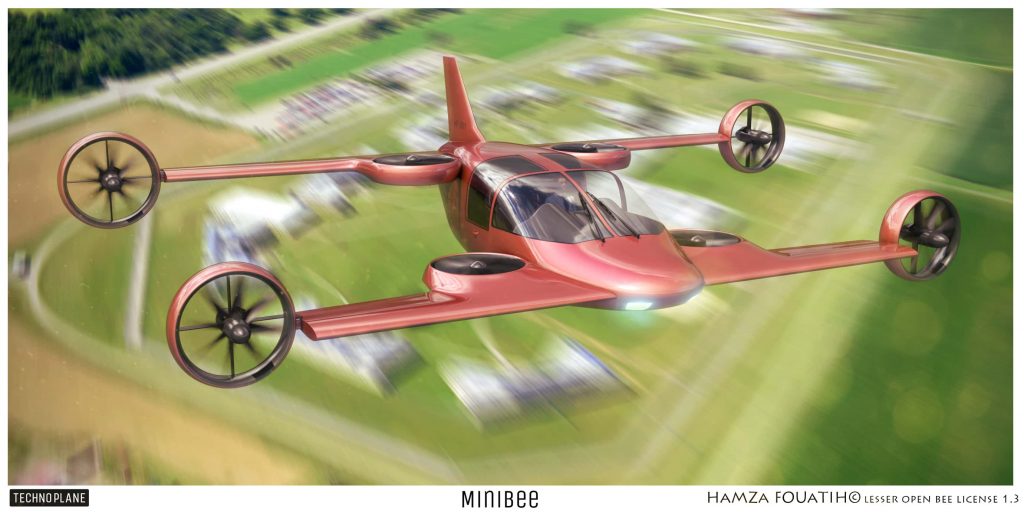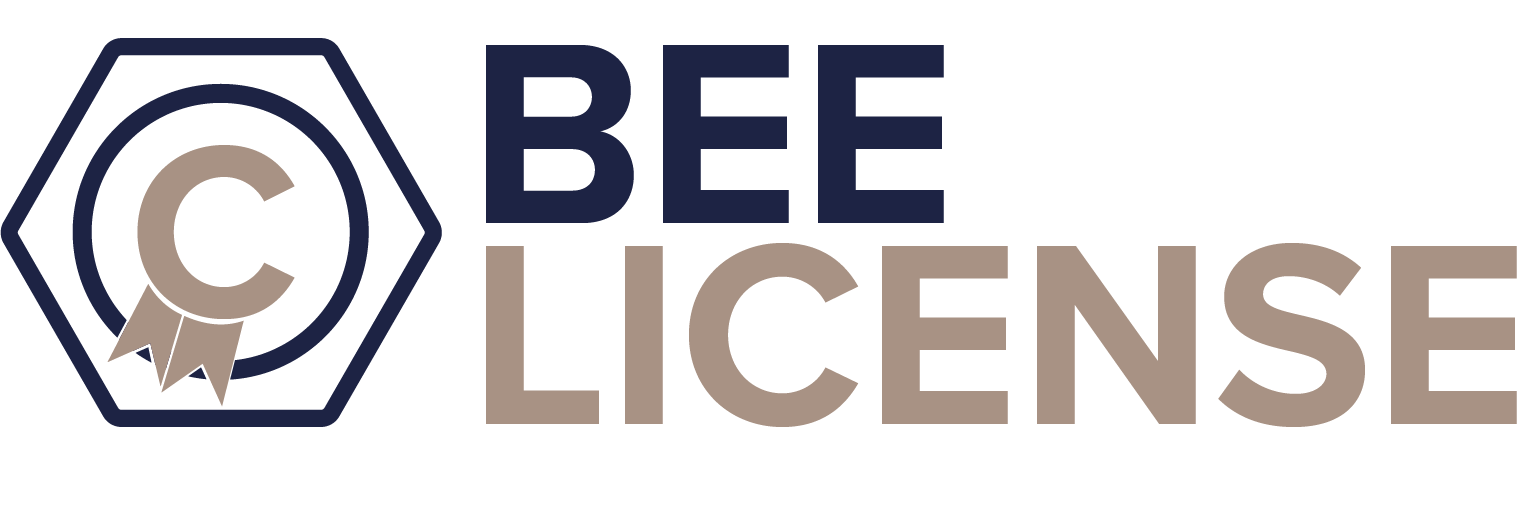Mini-Bee™
Mini-Bee™ is an open collaborative aeronautical project coordinated by Technoplane SAS and developed under the
Lesser Open Bee License 1.3.
Launched in January 2015, Mini-Bee aims to design a two-seat hybrid VTOL aircraft (Vertical Take-Off and Landing) capable of operating in urban and regional environments.
The project is currently in its TRL 3 active phase and involves more than ten universities and industrial partners working collaboratively on flight control, aerodynamics, and hybrid power systems.

Visit the Mini-Bee Official Website
What Is the Mini-Bee?
The Mini-Bee is a two-seat hybrid VTOL (Vertical Take-Off and Landing) aircraft designed for short-range missions such as medical evacuation, surveillance, and personal mobility.
It combines rotor-based vertical lift for takeoff and landing with a fixed-wing configuration for efficient forward flight.
The project explores the future of urban air mobility (UAM) through open collaboration between universities, research labs, and industrial partners.
Mini-Bee integrates the lessons learned from the Bee-Plane™ modular aircraft program but adapts them to smaller, distributed electric propulsion systems.
Its structure is lightweight and modular, enabling rapid testing, maintenance, and adaptation to different missions.
What Is a Multicopter?
A multicopter — also known as a quadcopter or drone — is a type of aircraft propelled by multiple rotors.
Common configurations include quadcopters (four rotors), hexacopters (six rotors), and octocopters (eight rotors).
Mini-Bee’s flight control architecture builds upon multicopter dynamics but integrates hybrid propulsion and fixed-wing lift surfaces for greater range and stability.
Multicopters are characterized by their ability to take off and land vertically (VTOL), hover precisely, and transition smoothly to forward flight.
They are controlled through advanced onboard systems that manage each rotor’s thrust independently — a key research domain for Mini-Bee’s flight control and autopilot systems.

What Is Urban Air Mobility (UAM)?
Urban Air Mobility (UAM) represents a new vision for transportation within cities and metropolitan areas.
It uses electric or hybrid-electric aircraft for short trips or on-demand services such as air taxis, delivery drones, or emergency response vehicles.
The Mini-Bee project directly contributes to this vision by developing an open, low-cost, and sustainable aircraft platform that can operate safely in populated areas.
The team’s work addresses challenges in noise reduction, flight safety, autonomy, and certification for future UAM operations.
By exploring hybrid powertrains and lightweight structures, Mini-Bee offers a realistic path toward practical electric aviation — bridging the gap between current drone technologies and future passenger air vehicles.
What Is a VTOL Aircraft?
A VTOL (Vertical Take-Off and Landing) aircraft can take off and land vertically, without the need for a runway.
This unique capability allows VTOL aircraft to operate in urban areas, remote environments, or disaster zones where traditional airports are unavailable.
Mini-Bee belongs to the hybrid VTOL category — combining the vertical lift of multicopters with the aerodynamic efficiency of fixed-wing aircraft.
Its design aims for short-range flight missions of approximately 100–200 km while maintaining low noise and low emissions.
- Vertical Lift: Provided by multiple electric rotors for precise control during takeoff and landing.
- Forward Propulsion: Hybrid-electric engines or ducted fans for efficient cruise.
- Energy System: A combination of batteries and lightweight combustion engines for extended autonomy.

Collaborative Development
The Mini-Bee program follows the Collaborative Bee Ecosystem model — an open engineering network linking schools and companies across France and Europe.
Every contribution, from aerodynamic analysis to powertrain simulation, is documented and published under the Lesser Open Bee License 1.3.
🎓 Academic Partners
- Ecole Centrale de Lyon (ECL): structural modeling and crash-resistance studies.
- ESTACA: design of the fuselage and hybrid powertrain integration.
- INSA Toulouse: aerodynamic optimization and rotor flow analysis.
- ENSTA Paris: autopilot algorithms, embedded systems, and TRL project management.
These teams cooperate through shared repositories and open-access tools like Onshape, SimScale, and BlenderGIS.
The goal is to create an open-source experimental aircraft demonstrator that can serve both as an educational platform and a foundation for future urban aviation products.
Research and TRL Progress
- TRL 1 (2015–2018): Concept validation and feasibility studies.
- TRL 2 (2019–2023): Prototype architecture definition, CAD models, and hybrid power simulations.
- TRL 3 (2024–2025): Experimental assembly, flight control validation, and structural testing.
Each phase is publicly documented on the Collaborative Bee Wiki and reviewed by Technoplane SAS as project coordinator.
Applications and Future Vision
The Mini-Bee is designed as a scalable platform for:
- Medical Evacuation: Rapid response and patient transport between hospitals.
- Search and Rescue Missions: Access to difficult terrain after natural disasters.
- Urban Air Taxi: Personal mobility and short-range transportation in smart cities.
- Training Platform: For aerospace students and flight-control researchers.
Its modular structure allows it to evolve toward larger hybrid-electric or fully electric configurations, paving the way for future generations of sustainable VTOL aircraft.

Part of the Collaborative Bee Ecosystem
Mini-Bee belongs to the same open research family as the Bee-Plane™ and ISO-Plane™ projects.
Together, these programs form the Collaborative Bee Ecosystem, promoting sustainable, open, and transparent innovation in aerospace design.
“Task achieved under the Lesser Open Bee License 1.3 – © Coordinator Technoplane SAS.”
Open-source project realized under the Lesser Open Bee License 1.3 – © Coordinator Technoplane SAS.
